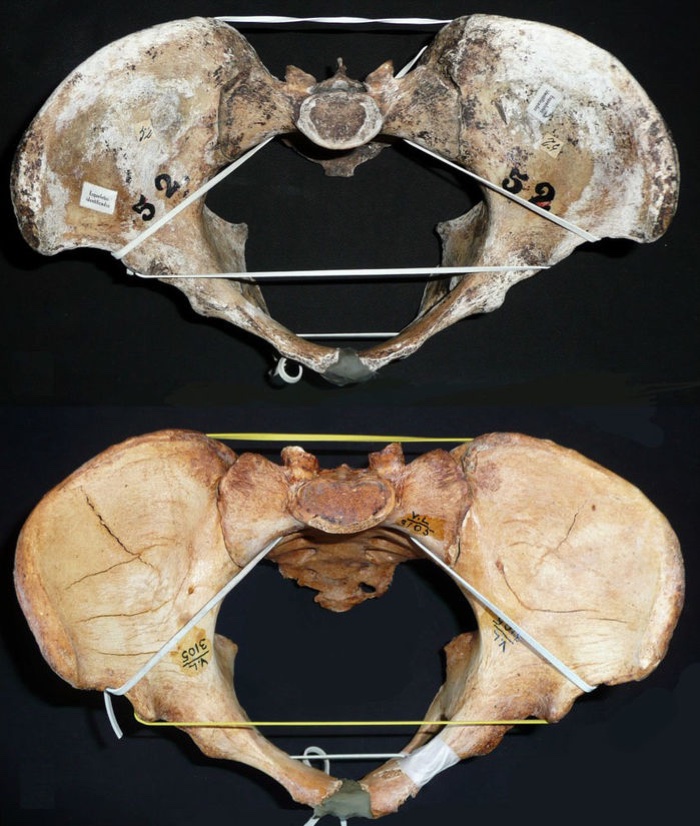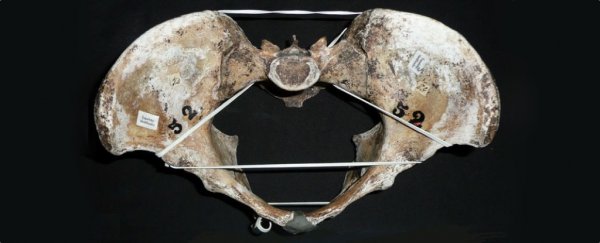No two child births are the same, but the female physiology that brings people into the world is more varied and complex than what science textbooks would have you believe, new research suggests.
An analysis of hundreds of women's skeletons from across the world dating as far back as 2000 BCE shows birth canals exhibit more diversity than scientists ever realised. And we missed those differences due to medicine's historical focus on one particular body type.
"An obstetrician's training is based on a model of the pelvis that has been developed from European women," evolutionary anthropologist Lia Betti from the University of Roehampton in the UK told AFP.
"But the typical pelvic shape and typical childbirth pattern can differ among populations. An update seems necessary, especially in a multi-ethnic society."
 Two different birth canals: wider and more ovular on top, deeper and rounder at bottom (Lia Betti)
Two different birth canals: wider and more ovular on top, deeper and rounder at bottom (Lia Betti)
Betti and fellow researcher Andrea Manica, an evolutionary ecologist at the University of Cambridge, investigated the pelvises of 348 female individuals from 24 populations, sourced from multiple continents and dating from ancient times through to modernity.
Traditionally, science posits that these skeletons should provide a broad body of evidence for what's known as the obstetrical dilemma.
The obstetrical dilemma is the idea that the shape of the female pelvis represents an evolutionary trade-off between two competing pressures: the need to walk upright on two feet, and the need to deliver babies with large skulls.
The hypothesis – which has prevailed for decades – makes a number of assumptions about gestation and delivery, such as how babies must rotate as they negotiate the passage of the birth canal.
"However, that was based – basically exclusively – on European women, who have a particularly twisted canal," Betti told The Guardian.
"A different pattern of childbirth that is considered odd for European women and therefore seems to ring alarm bells could be perfectly normal for other populations."
And that's what the pelvic structure of those 348 skeletons does seem to indicate, demonstrating a range of differently shaped pelvic canals from different parts of the world, which the researchers suggest is evidence of random, neutral evolution, rather than the uniformity of natural selection.
"The classic narrative of the 'obstetrical dilemma' sees the birth canal as a tight compromise between a narrow, locomotory efficient pelvis and a wide, obstetrically sufficient pelvic canal, implying that functional constraints should limit female variation in the shape of the canal," the authors write.
"This is clearly incorrect."
The researchers say sub-Saharan African populations overall have deeper birth canals, while Native American populations exhibit wider canals. Asian and European/North African populations are somewhere in the middle, and populations from colder regions display a more oval shape of the canal inlet.
But the researchers don't think it was primarily the colder temperatures themselves responsible for these variations.
Instead, the random process of genetic drift meant that as human populations expanded further away from Africa and founded new continents, diversity in birth canals reduced as genetic diversity lessened.
"Each founding event, in fact, was achieved by a subpopulation carrying only a portion of the ancestral population's genetic diversity," the researchers suggest.
"The signature of these serial founding events is evident in modern populations' genetic variation, whereby genetic diversity decreases with increasing distance from Africa."
Ultimately, this process is responsible for 43.5 percent of canal diversity within human populations, the team says.
Not only are the findings a telling reminder of how embracing diversity benefits scientific understanding as a whole, but it's a good example of how science – like bodies themselves – can't always be shoehorned into neat, established categories.
"This illustration of high variation is important because it challenges common perceptions that the pelvic canal of females has one particular 'best' shape," anthropologist Helen Kurki from the University of Victoria in Canada, who was not involved in the research, told The Scientist.
"Not everything about our morphology is an adaptation to something in our environment. Often it is just these neutral processes at play."
The findings are reported in Proceedings of the Royal Society B.
